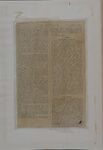< Dreams (continued from page 10-43) >
where the murder was committed . . . My brother knocked Mr. Norway down; he snapped a pistol at him twice, and it did not go off. He then knocked him down with the pistol. I was there along with him. Mr. Norway was struck while on horseback. It was on the turnpike-road, between Pencarrow Hill and the directing post toward Wadebridge. I cannot say at what time of the night it was. We left the body in the water, on the left side of the road coining to Wadebridge. We took some money in a purse, but I did not know how much. My brother drew the body across the road to the watering.”
What can the theory of chance or coincidence do in this case? Simply nothing. “A more complete series of correspondences between dream and reality can hardly be imagined. . . . The various coincidences, taken together, as proof that chance is not the tine explanation, have all the force of a demonstration in Euclid.”
And there is no reason to believe that such visions of the night are caused by miraculous intervention. Indeed, many of the mysteries of the day which have been made clear by the visions of the night are of too ordinary a nature for miraculous interference. Take, for example, the following, for the truth of which Dr. Abercrombie vouches:—
“A lady in Edinburgh had sent her watch to be repaired. A long time elapsed without her being able to recover it; and, after many excuses, she began to suspect that something was wrong. She now dreamed that the watchmaker’s boy, by whom the watch was sent, had dropped it in the street, and had injured it in such a manner that it could not be repaired. She went to the master, and, without any allusion to her dream, put the question to him directly, when he confessed that it was so.”
We see no miracle or supernatural interference in this case, nor in any of the cases cited. We see in such visions of the night simply an extension of that order which -we find in the physical world. What is called miracle is simply the higher power—spirit controlling the lower—matter. And “in certain exceptional conditions of the human system, as occasionally during dreams, or under other circumstances when the will is surrendered, some . . . occult intelligence other than our own may not, for a time and to a certain extent, possess itself of the power to employ the cerebral mechanism so as to suggest or inspire thoughts and feelings which, though in one sense our own, yet come to us from a foreign source.”
Only occasionally are we favoured with the verifiable presence of the inhabitants of the spirit land. But often, when we see them not, they may be near us, suggesting wisdom to us and guiding us, as really as the stronger wills on earth form and guide the weaker ones.
Clairvoyant dreams are only a part of the varied and remarkable things of spirit life. And before they are despatched to the region of lawless fancy, or the limbo of superstition, by the reader, he will do well to give the subject a careful and thorough consideration. After such consideration, he will probably have a clearer look out on the spirit home beyond the grave than he ever had before.
And to the frequent question, “What is the use of Spiritualism? he will be able to answer—the certainty of a future life of spiritual progress for all mankind. And he will be able to speak with confidence of the blessed communion which the dwellers in time have with the inhabitants of the spirit land.
Hull, September 13th, 1879.
Sorcerers in Guernsey
...
The Marcou
...
Editor's notes

